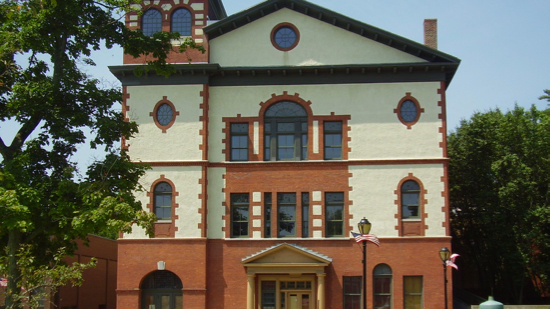 On Jan. 30 the Valley Indy reported that Derby Aldermen agreed to settle a dispute with the federal government over how a grant for the Sterling Opera House was used.
On Jan. 30 the Valley Indy reported that Derby Aldermen agreed to settle a dispute with the federal government over how a grant for the Sterling Opera House was used.
According to the settlement agreement, the city didn’t follow the rules of the grant, which required the city to get a green light from the feds before withdrawing grant money.
The settlement was a way to avoid a lawsuit by the U.S. Attorney’s Office against the City of Derby.
The money was used to come up with a renovation plan for the historic building, which is next to the courthouse on Elizabeth Street and across from the Derby Green.
Here are the highlights of the agreement:
- The U.S. Attorney’s Office, acting on behalf of the Department of the Interior, alleged that Derby engaged in “improper conduct during the period from January of 2013 through February of 2014.”
- The city had received a “Save America’s Treasures” grant from the Department of Interior’s National Park Service “for the renovation of the City’s historic Sterling Opera House.” The agreement doesn’t specify the date or dollar amount, but a “Save America’s Treasures” document pegs it as a $150,000 grant given in 2010.
- The grant required Derby to get approvals before withdrawing money.
- Derby withdrew $10,000 in January 2013 without submitting the required paperwork for approval.
- In September 2013 Derby submitted paperwork asking to withdraw $150,000.
- In January 2014, the National Park Service denied Derby’s request, “because the renovation plans that the City’s contractor had produced did not comply with the Secretary of the Interior’s ‘Standards for the Treatment of Historic Properties.’”
- In February 2014, an unnamed city official withdrew $100,000, even though the request to access the money had been denied, “instead of contacting the NPS to discuss how to comply with the requirement of the grant agreement.”
As a result, the Aldermen unanimously authorized Mayor Anita Dugatto to sign a legal agreement last month that compels Derby to pay $110,000 back to the federal government.
A day before publishing last month, the Valley Indy had emailed a few questions to Derby City Hall and the federal government about the matter.
Here are the questions and answers we received, followed by an embedded copy of the legal agreement.
FYI, First Ward Alderwoman Barbara DeGennaro referred questions to Derby corporation counsel Thomas Welch, who also received the questions through email.
1. Valley Independent Sentinel: The money that was drawn down from the Save America’s Treasures grant — what, specifically, was it used for at the Sterling Opera House?
Henry Domurad, Mayor Dugatto’s chief administrative assistant: “The money was spent on architecture pre-design, schematic design, design development and engineering consultants.”
Second Ward Alderman Art Gerckens: “I believe the money was used to pay invoices submitted by an architectural firm that was hired to do design work by the previous administration.”
2. VIS: What is the status of the renovation effort now that the city had to pay back $110,000? Is there, essentially, no money for the project?
Domurad: “The project was never fully funded through revitalization, the intent was to get a plan, which we have.”
Gerckens: “I am not aware of any renovation effort. There may be one, but if there is, it hasn’t been discussed at any meetings I’ve attended. I do know that the city is still eligible for any future grant money that may become available.”
The Valley Indy sent a subsequent email to Derby City Hall and the feds asking how the initial Sterling Opera House plans failed to comply with the standards for the treatment of historic properties. Neither the local nor federal government had responded as of Feb. 8.
Tom Crosson, the chief of public affairs for the National Park Service, sent the following email:
“The project did not adhere to all of the special conditions outlined in the grant agreement. Specifically, the conditions on providing performance reports, and ensuring a satisfactory NPS (National Park Service) review of all planning and design documents for conformance of the Secretary of Interior’s Standards for the Treatment of Historic Properties. The conceptual design presented does not appear to be working to rehabilitate the structure per the standards.”
Sterling Agreement In Derby by The Valley Indy on Scribd